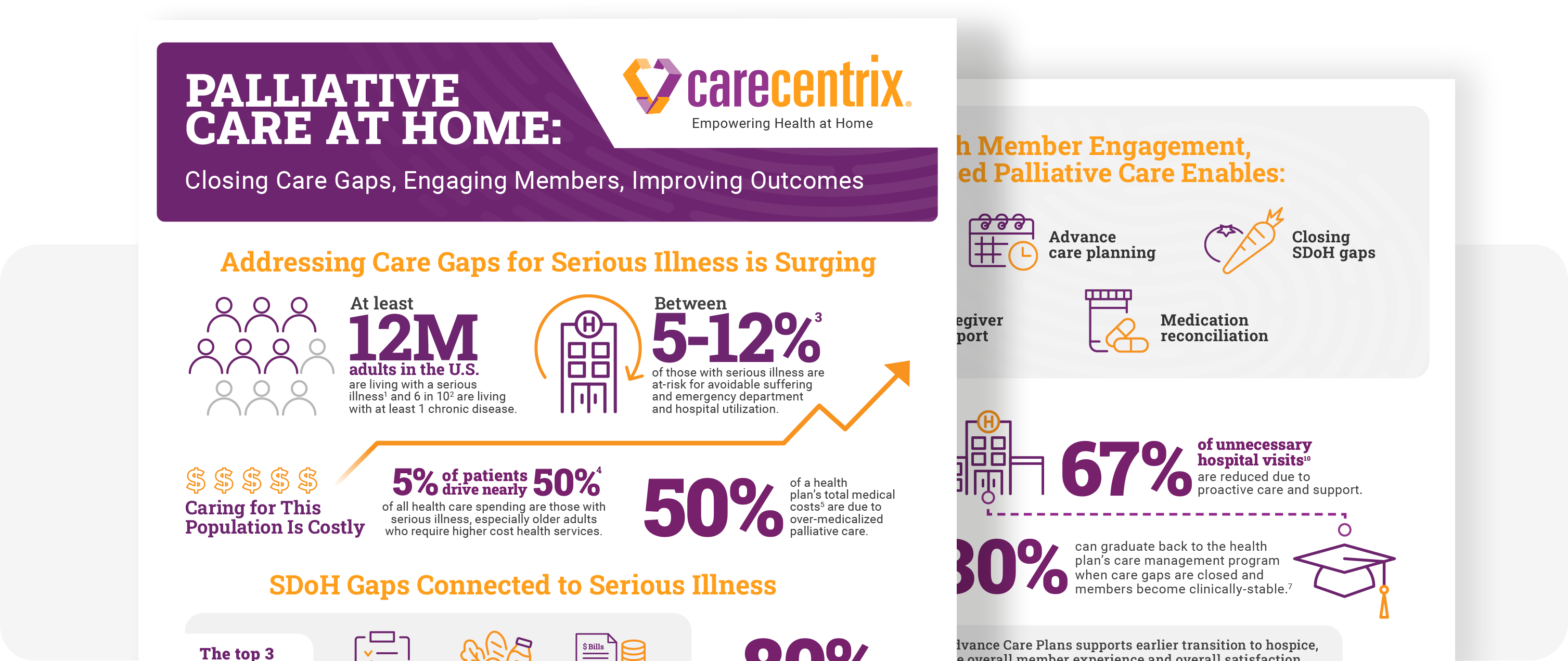
As a result of economic downturns, aging, and chronic disease populations, and nurse attrition1, healthcare staffing shortages in the U.S. have been a significant industry challenge for decades—and after COVID-19, it’s now a crisis.
Nurses continue to experience demanding workloads and schedules, and high levels of stress and burnout, leading many to leave their roles.
By 2030, estimates show the number of registered nurses needed will increase by 28.4% from 2.8 million to 3.6 million. 2
There’s no doubt that healthcare staffing shortages will persist and continue to impact the industry at large. Staffing shortages directly affect the member experience, presenting unique challenges, especially for Medicare Advantage plans as they navigate the heightened focus on CAHPS® this year.
65% of respondents say staffing shortages are the number one concern this year.3
Healthcare Staffing Shortages: The Impact on Post-Acute Care
Healthcare staffing shortages have had a significant impact on post-acute care sites in particular, including skilled nursing facilities (SNF), inpatient rehabilitation facilities (IRF), long-term acute care hospitals (LTCH), and assisted living facilities.
As a result, hospitals are often prevented from transitioning patients to the next site of care, increasing their length of stay, which may not always be appropriate or needed for their condition.
To compensate for the staffing shortages, many post-acute facilities have increased patient-to-staff ratios, which has caused abrasion and led many nurses to find new roles or exit the industry altogether.
Another impact of healthcare staffing shortages is that higher-acuity facilities aren’t able to accommodate the volume, forcing many patients to be placed in facilities that are out of state or far from their families, which impacts quality of life outcomes.
For example, an LTCH may not have the capacity for a patient moving from an acute care setting because one of its patients isn’t able to move to a sub-acute facility.
The shortage of home health providers among some agencies may also prevent patients who need skilled nursing services from returning to their homes. As a result, hospitals may transition them to higher-acuity facilities such as SNFs.
At the end of the day, the ripple effect impacts the healthcare ecosystem, and the disruptions are affecting transitions of care, negatively impacting the member experience, and increasing the total cost of care.
How Do You Address Staffing Shortages in Post-Acute Care?
Post-acute care solutions that focus on having the right level of support and engagement for both providers and members during each transition of care can make a difference in the member’s overall experience.
Leveraging a transition team that specializes in member-centric care coordination can alleviate the pressure on providers and improve discharge planning decisions by providing recommendations for the most effective and appropriate level of care, resulting in a lower total cost of care for payors.
A Unique Approach that Solves Healthcare Staffing Shortages
The CareCentrix model leverages on-site and virtual Care Transition teams to support providers and ease the burden of staffing shortages.
Our Care Transition teams become the single point of contact and provide clinical and personal recommendations and advocacy for the next site of care and support for members.
Nurse liaisons deployed throughout the market work with the hospital discharge care managers and care management teams.
Additionally, the nurse liaisons live in the local communities, which in turn enables payors to advance health equity by helping members overcome language and cultural barriers, and improve their engagement and adherence to their care plan.
Through HomeBridge®, a CareCentrix portal designed for providers to coordinate care, there is a centralized location for the member’s electronic health records (EHR).
With the help of AI/ML-driven analytics that leverage outcomes and population health data, discharge management is simplified by generating personalized care and discharge recommendations.
This allows for a more collaborative discussion between hospitals and post-acute facilities. In addition, members receive site of care and provider recommendations to make informed decisions about their care.
These resources and tools allow seamless care coordination and timely payor authorizations, which reduces lengths of stay (LOS), improves acute throughput, and moves members to the home or the next best site of care to achieve the best outcomes.
For members and caregivers, on-site care coordination:
- improves engagement
- provides coaching and support to improve understanding of the diagnosis
- addresses social determinants of health (SDoH) challenges
- connects them with the right resources
By engaging early with nurse liaisons, members are more likely to enroll and engage in a readmissions management program once they return home.
For payors, addressing the post-acute care staffing shortage can directly impact the member experience by improving outcomes and overall member satisfaction.
When post-acute care admission is necessary, we not only identify the right provider, but our Care Transitions team proactively engages with facilities so that members stay on track with their care plans, allowing them to return home sooner, and providing a support service that, at the same time, helps ease staffing shortage challenges.
Want to learn more? Explore CareCentrix Post-Acute Care Site Optimization program or request a consultation.
EDRC 1906
Footnotes
- American Nurses Association
- RegisteredNursing.org
- CareCentrix LinkedIn Poll, December 2022.





